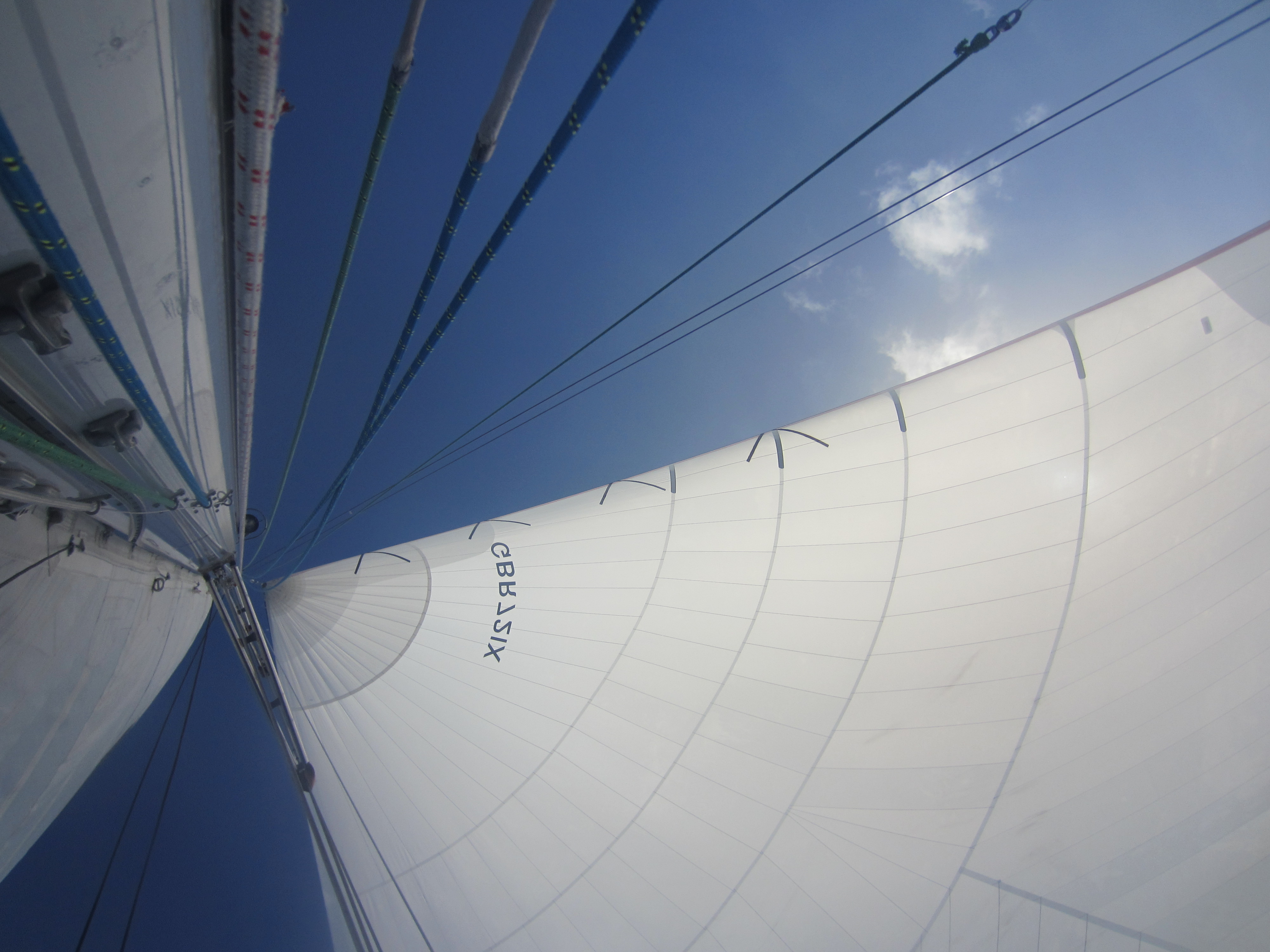What am I talking about
Written 25 January 2014, at sea
Hopefully you’ve guessed by now that I am on a sailing yacht! I cannot sleep and have just been re-reading some of these posts, and it strikes me that you won’t have a clue what I am talking about, unless you are lucky enough to have some sailing experience. So here is my attempt at making things a little clearer.
We basically have the ability to sail with three sails, but the size of each and combination that we use is determined by the wind speed and direction.
Sailing Upwind
This happens when the wind is coming from anywhere in front of the boat and we are sailing into it. We can’t sail directly into it so if our ideal course is 290° and the wind is coming from 290°, we have to tack, making for a zigzag course that when averaged out gives the correct course. For this we use what is generally called our white sails. These are, from the back of the boat to the front – one mainsail, one staysail and a choice of Yankee. Here’s where it gets complicated. We have 3 of these. Only one can be used at a time. A big, heavy Yankee One, or Y1 for use in light winds. A Y2 which is medium-sized, and a smaller Y3 for heavier weather. For the staysail we can choose to use it or not. However the mainsail is pretty much always flown. It gives balance to the boat and counteracts the keel beneath the boat. But we can change its size, by adding 1, 2 or 3 reefs making the sail progressively smaller as each reef is added. However in very heavy weather we use the storm trisail instead. This is basically a handkerchief of a sail whose main purpose is to give balance. Shaking out a reef is the process of going the other way, gradually making the sail area bigger.
Sailing Downwind
If sailing upwind happens when the wind is coming from ahead of the boat, sailing downwind is when you have the wind coming from behind or at any angle more than 90°from the front. Instead of the Yankee we use a spinnaker and again we have a choice of 3 of these, from the big A1 to the smaller A2 and A3. These sails are made of a lighter material than the other sails and are treated differently.

Windseeker
This is a strange sail. Cut like a Yankee, it is more like a spinnaker in other respects, and is also known as a Code Zero. It can be used when there is no wind and even when the boat is pointing a little upwind.
Heave-to
A safe position, heaving to happens when the wind is acting on the headsails in one direction and the mainsail in the other direction. Basically the two actions cancel each other out and the boat goes nowhere, flattening out in whatever seas we are in. We can get to this position at any time just by turning the boat head to wind.
© Anita Davies and http://anitasailsagain.com The blog post above first appeared on http://anitasailsagain.com, and is subject to copyright. If you can see this message it probably means that the content has been copied without permission, in violation of that copyright. To see this post within the context that was intended, please enter http://anitasailsagain.com into your browser.
Full copyright notice, as displayed on site: © Anita Davies and http://anitasailsagain.com, 2013. Unauthorized use and/or duplication of this material without express and written permission from this blog’s author and/or owner is strictly prohibited. Excerpts and links may be used, provided that full and clear credit is given to Anita Davies and http://anitasailsagain.com with appropriate and specific direction to the original content.

AnitaSailsAgain by Anita Davies is licensed under a Creative Commons Attribution-NonCommercial-NoDerivs 3.0 Unported License.
Based on a work at https://anitasailsagain.com.
